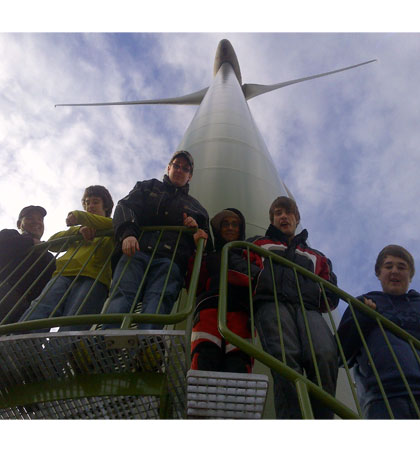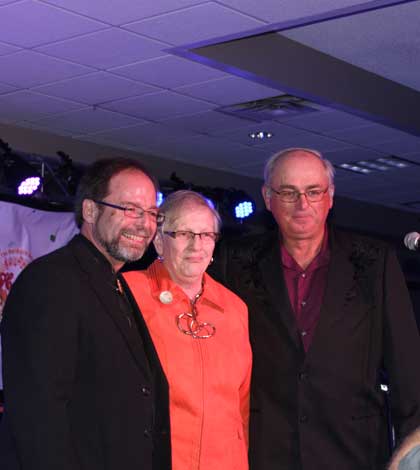M’CHIGEENG—It’s great to have the opportunity to take a class of impressionable students to tour the M’Chigeeng turbines. The MERE (Mother Earth Renewable Energy) project started in 2003 and came to fruition in 2012. The project recently completed its first full year of operations. The wind turbines are very close to the school, and these students have experienced a new and exciting perspective of windmills, the infrastructure involved with them, and future employment opportunities in renewable energy fields.
According to Grant Taibossigai, our tour guide, wind generation hasn’t been an easy proposition for MERE. In its first year of operation, the $12.5-million, 4-megawatt wind turbine project run by the M’Chigeeng First Nation encountered more than a few snags that held up production. From a delay in receiving its certificate to operate to power surges to communication issues to a three-week late-autumn shutdown mandated by Hydro One, the community got a crash course in the nuances of energy generation.
Mr. Taibossigai proudly showed the class the hydro sub station and explained its development, infrastructure and how it is tied into the Ontario hydro grid. Students were fascinated to see all the connections and were keenly interested when told about monitoring in M’Chigeeng, Halifax and Germany. Once inside the turbines the students learned about the mechanical components, construction and operation of the entire turbine and were fascinated to see how they work. Riley McGale, a student of MSS, commented that “each windmill had three floors of electronics at the bottom and an elevator that takes people right to the top.” Fellow student Brett Deeg was surprised to learn that workers need a licence to climb the ladder inside the turbine, the transformers were huge and needed a lot of cooling, and there was an amazing structure to the base of the turbine.
Chris Case was amazed at how big they were close up and the fact that they swayed in the wind. Mac McGrady commented that there was a lot of technology that goes into the project and was thankful for his experience. “We had a blast!” he said.
Project Manager Grant Taibossigai was very upbeat and excited about the project.
According to its business model, the project should generate about $300,000 of surplus funds annually in the first 14 years of operation (the First Nation has secured a 20-year power generation contract with the Ontario Power Authority), and $1.2 million annually for the succeeding six years after financing loans are repaid. These funds will go a long way in maintaining the facilities and helping the community become a better place to live and work.
The resource class thanked Mr. Taibossigai for their tour.
Renewable energy generation is strong and alive on Manitoulin, and many students will have future work opportunities in the economic spin off it creates, this teacher notes. After all, we all use hydro every day. Generating it in our area through viable, renewable projects like this, models living in harmony with Mother Earth in today’s society.
Lisa Addison is the Manitoulin Secondary School resource class teacher.





